Martha Kufner Schmaltz: For The War Effort
Martha Kufner Schmaltz, the daughter of Austrian immigrants, left her 39-cents-an-hour job at Montgomery Wards for a job at the Northwest Airlines B-24 bomber modification center in St. Paul in 1942, lured by the higher wages and an opportunity to contribute to an Allied victory. She later applied for work with Northwest Aeronautical Corporation, where she was involved in building gliders. Wanting to do even more for the war effort, Martha left defense work behind and joined the Marine Corps in the spring of 1944. She was interviewed in 2007 for the Minnesota's Greatest Generation project by historian Douglas Bekke.
Transcript
DB: So you continued working at Wards.
MS: Yes. I worked at Wards until I quit there, I believe, in 1942.
DB: And how did you get in working with the airlines?
MS: I put in my application, because everybody was getting a war job and the war jobs were paying a lot more than Wards. So I put in my application at Northwest Airlines, and I worked right down in St. Paul at the big hangars down there.
DB: How did you hear about the job?
MS: Everybody heard about jobs during the war. Anybody could get a job during the war at a defense plant. A lot of people went out to New Brighton.
DB: How much did it pay? Do you remember? Roughly? Compared to the thirty-nine cents.
MS: I don’t remember, but it was better. Oh, yes. It was a lot better than thirty-nine cents.
DB: A dollar an hour maybe?
MS: Yes. Probably. A dollar five, maybe.
DB: Were taxes a significant chunk out of your wages?
MS: All I remember is taking Social Security out. I can’t remember taking taxes.
DB: What were you doing at Northwest Airlines?
MS: I worked what they called the tool crib, where all the tools were stored. They had drills and hammers. Then the people would come to this tool crib and check out the drills they needed. They were working to modify the B-24s at Holman Field. They worked three shifts. They had the morning, they had the afternoon, and then they had the midnight shift. And you worked two weeks on each shift.
DB: Now the people who were working there, most of them probably had someone in the service. ...Was there a lot of patriotism? Were people really motivated to do things and do them well and to support the troops? People seemed to be really on board with the war effort?
MS: Yes.
DB: So you worked at the defense plant or at Northwest until about when?
MS: I worked there until early 1943. Then I quit because I didn’t like the three shifts. So I got a job at Northwest [Aeronautical], which was another war plant. That was up on Minnehaha and Prior, and we made gliders there. We put the fabric on gliders, and from there I went into the service.
DB: So when you were working on the gliders, were you actually working on the production lines?
MS: That’s right. Yes.
DB: Was it difficult working on the gliders? Was the pay good?
MS: The pay was good, but it was hard on your hands. You had to work with this glue.
DB: You were working on the wings, mostly?
MS: No. On the whole plane. On the whole glider body and all over.
DB: Did you get your picture in the paper?
MS: Yes. They had a little paper ["Tow Lines"] that the company put out, and I have the picture that they put in there. We were two of the best girls that could do that kind of work.
DB: And how long did you work there?
MS: I worked there until I went in the service in 1944.
DB: And here, working on the gliders, was there a strong sense of commitment from the people working there or was it just a job? Did people feel they were really part of the war effort?
MS: Everybody worked together.
DB: You had a good job. What prompted your decision to go in the service?
MS: Well, my girlfriend worked at Wards, and I worked at Northwest Aeronautics. One day we talked about it. There were no men around and nothing much to do. We wanted to do something for our country. So we went down the Federal Building, and we wanted to go into the WAVES. The recruiter for the WAVES was on his lunch hour, and the Marine Corps officer said, “Come on in here, girls.” So that’s how we signed up for the Marine Corps.
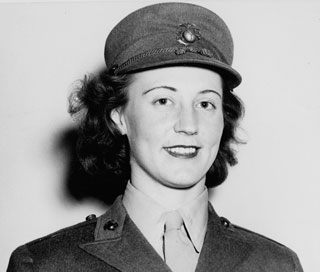



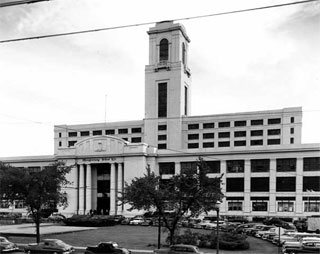
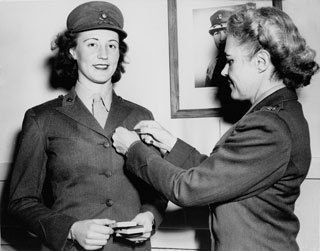
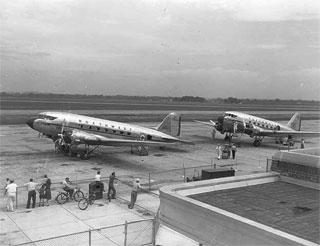

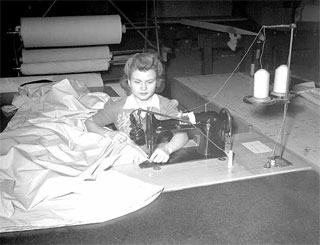
Source
Schmaltz, Martha Kufner; Douglas Bekke, Interviewer, Martha Schmaltz Oral History Interview, Minnesota's Greatest Generation Project, Minnesota Historical Society Oral History Collection.


